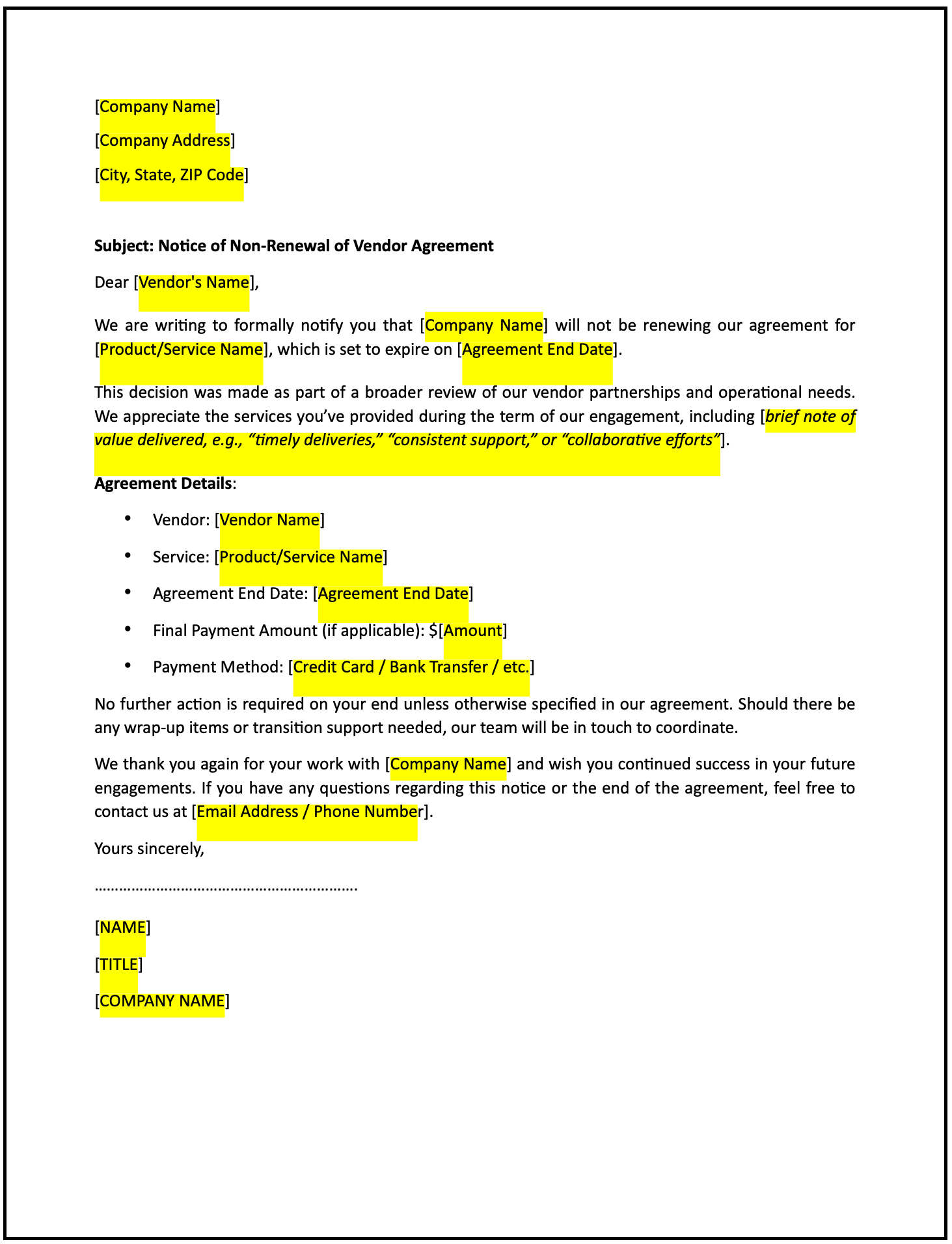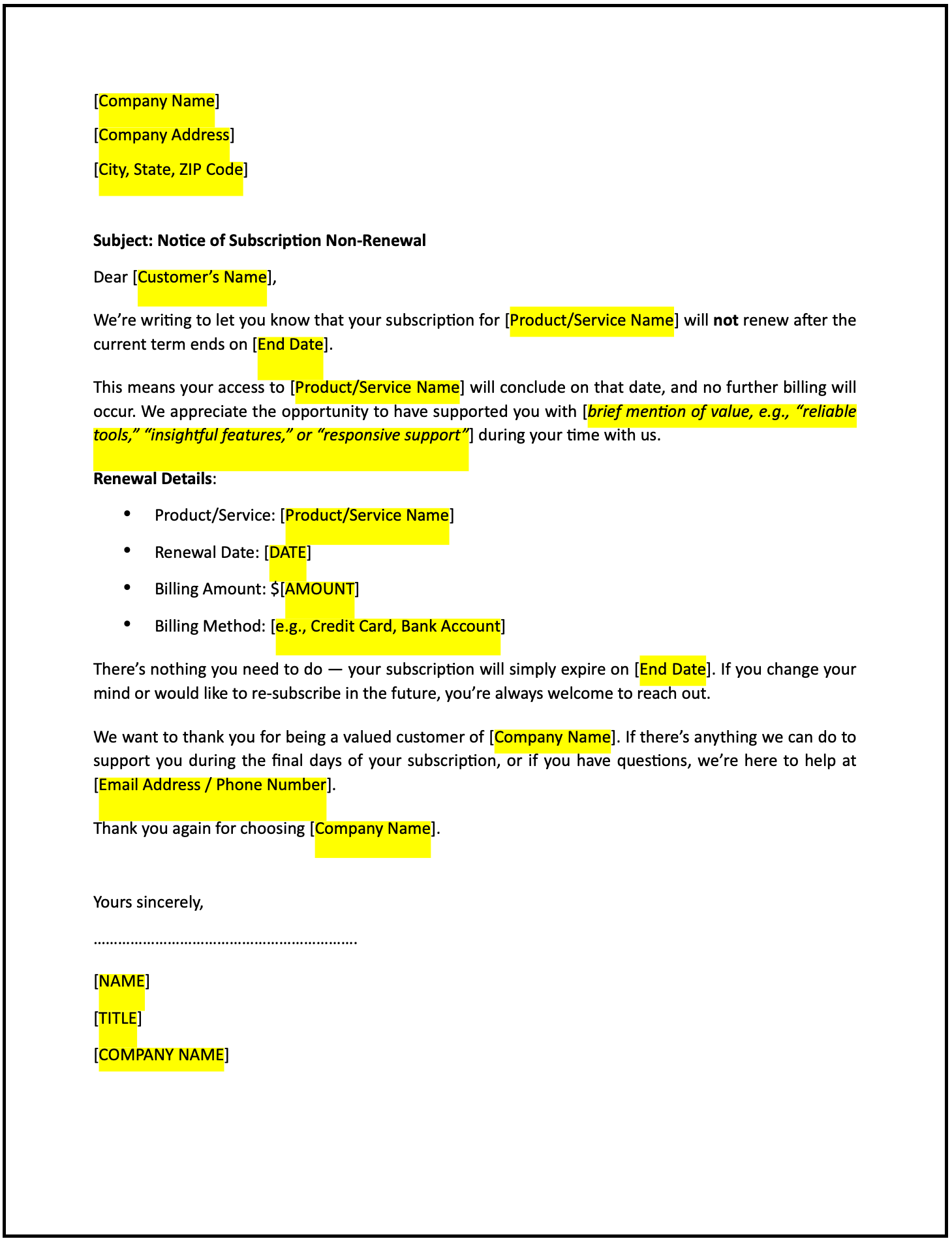Notification letter of intent to offset damages against payment: Free template

Notification letter of intent to offset damages against payment
A notification letter of intent to offset damages against payment is a formal way to inform the other party that you plan to deduct damages incurred from amounts owed under the agreement. This letter outlines the basis for the offset, the amount to be deducted, and the reasons for this action.
How to use this notification letter of intent to offset damages against payment
- Open with context: Start by referencing the agreement or relationship under which the payment obligation and damages arise.
- State the intent: Clearly communicate your intent to offset the damages incurred against the payment due.
- Provide details: Specify the nature of the damages, including amounts and the basis for the offset, such as breach of contract or non-performance.
- Reference supporting terms: Cite the relevant contract clauses or applicable laws that permit offsetting damages against payments.
- Include evidence: Attach supporting documentation, such as invoices, records, or correspondence, to substantiate your claim.
- Request acknowledgment: Ask the recipient to confirm receipt of the letter and any agreement or objections to the proposed offset.
- Maintain a professional tone: Ensure the letter is respectful, clear, and focused on resolution.
- Provide contact information: Include details for further communication or clarification if needed.
Benefits of using a notification letter of intent to offset damages against payment
This letter template ensures a structured and professional way to assert your rights while fostering transparency and resolution. Here’s how it helps:
- Protects your interests: Clearly asserting your intent to offset damages demonstrates your commitment to enforcing the agreement.
- Encourages accountability: Notifying the other party provides an opportunity for dialogue and resolution.
- Reflects professionalism: A well-crafted letter reinforces your credibility and seriousness.
- Reduces disputes: Providing clear reasoning and evidence minimizes misunderstandings and potential conflicts.
- Supports documentation: Creating a formal record of your intent is valuable for future reference or legal proceedings.
Tips for writing an effective notification letter of intent to offset damages against payment
- Be specific: Clearly reference the agreement, describe the damages, and outline the offset amount.
- Use professional language: Maintain a respectful yet assertive tone to convey the seriousness of the matter.
- Include evidence: Attach supporting documentation that substantiates your claim and reinforces your position.
- Highlight implications: Explain the rationale behind the offset to ensure the other party understands its necessity.
- Keep it concise: Focus on the key points without overwhelming the recipient with unnecessary details.
Frequently asked questions (FAQs)
Q: What details should I include in this letter?
A: Include references to the agreement, the damages incurred, the offset amount, supporting evidence, and a request for acknowledgment.
Q: Should I personalize the letter?
A: Yes, addressing the recipient directly ensures clarity and demonstrates attentiveness.
Q: Who typically receives this letter?
A: Send the letter to the party responsible for the payment or breach of the agreement.
Q: How formal should this letter be?
A: The tone should be highly professional and assertive, focusing on clarity and resolution.
Q: When should this letter be sent?
A: Send the letter promptly after determining the damages and deciding to offset them against payment.
Q: Can this letter include a request for negotiation?
A: Yes, inviting dialogue can foster resolution and avoid escalation while preserving the relationship.
Q: Is acknowledgment from the recipient required?
A: While not mandatory, requesting confirmation ensures the letter has been delivered and understood.
This article contains general legal information and does not contain legal advice. Cobrief is not a law firm or a substitute for an attorney or law firm. The law is complex and changes often. For legal advice, please ask a lawyer.


